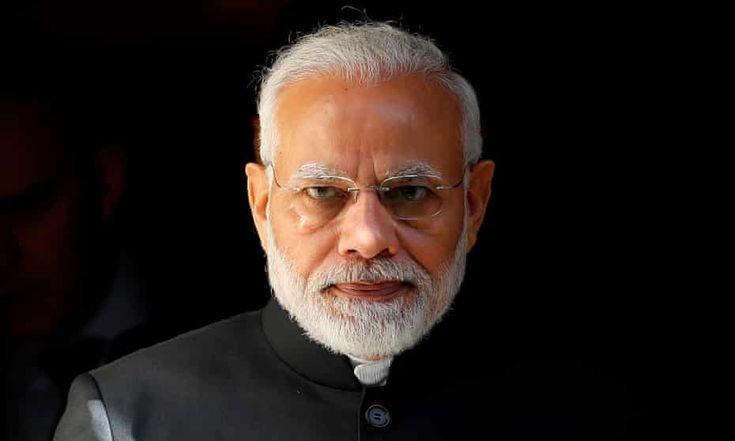Introduction
The Bharatiya Janata Party (BJP) has emerged as a significant political player in India, particularly under the leadership of Prime Minister Narendra Modi. Since assuming office in 2014, Modi has not only reinforced the party’s influence but has also transformed the political landscape of the nation. With an agenda centered around economic growth, nationalism, and social welfare, Modi’s government has introduced a range of policies that resonate with a diverse electorate.
One of the prominent features of the Modi government is its focus on economic reforms aimed at boosting investment, facilitating ease of doing business, and promoting entrepreneurship. Initiatives such as “Make in India” and “Startup India” have witnessed substantial support from both domestic and international investors. Modi’s leadership style, characterized by decisive action and a strong digital outreach, has reinforced the BJP’s image as a forward-looking party. This approach has played a crucial role in garnering public support and building a loyal voter base.
The political strategies employed under Modi’s tenure have also contributed to reshaping the BJP’s identity. The party has adeptly utilized social media and technology to engage with voters, providing a platform for direct communication and showcasing government achievements. This modernized outreach, along with traditional campaigning techniques, has ensured the party’s relevance in an era where public opinion is heavily influenced by digital platforms.
At the core of Modi’s governance style lies a commitment to the values of service, integrity, and inclusiveness. The government has championed several social initiatives aimed at empowering marginalized communities, enhancing access to education, and improving healthcare. As the BJP continues its journey, Modi’s leadership serves as a benchmark for emerging leaders, illustrating the transformative potential of combining visionary policies with robust governance strategies. The subsequent sections will delve deeper into the specifics of political and social changes initiated during this pivotal era in Indian history.
Transformative Policies and Initiatives
Since coming to power in 2014, the Bharatiya Janata Party (BJP) under Prime Minister Narendra Modi has introduced a multitude of transformative policies and initiatives designed to reshape India’s socio-economic landscape. These programs have aimed not only to propel growth but also to establish benchmarks for effective governance. Among the most notable initiatives are ‘Make in India’, ‘Digital India’, and ‘Swachh Bharat Abhiyan’, each targeting different sectors with the intent of fostering comprehensive development.
‘Make in India’, launched in September 2014, seeks to enhance the country’s manufacturing sector and entice foreign investments. By simplifying regulations and providing incentives, this initiative aims to establish India as a global manufacturing hub. The initiative has led to the creation of millions of jobs, contributing significantly to the economy. ‘Make in India’ has also encouraged innovation in technology and manufacturing processes, thereby stimulating both small-scale and large-scale industries.
In the realm of technology, ‘Digital India’ has transformed the way services are delivered to citizens. Launched in July 2015, this initiative strives to improve digital infrastructure, increase internet connectivity, and promote digital literacy. By digitizing government services and encouraging startups, ‘Digital India’ has empowered individuals and businesses, fostering a more inclusive digital economy. This initiative has also been instrumental in enhancing transparency and reducing bureaucracy within the governmental framework.
The ‘Swachh Bharat Abhiyan’, initiated in October 2014, is another cornerstone of the BJP’s policy agenda. Aiming to achieve cleanliness and sanitation across urban and rural India, this campaign emphasizes the importance of hygiene for public health. By promoting awareness and encouraging community participation, it has successfully improved sanitation facilities and brought about a cultural shift regarding cleanliness in society.
These initiatives reflect a common goal: the holistic development of India. Through systematic planning and execution, they have not only benefited the current population but have also set a formidable precedent for future governance. In summary, the Modi government’s policies are pivotal in shaping a prosperous future for India, balancing economic growth with socio-environmental objectives.
Leadership Style and Governance
Prime Minister Narendra Modi’s leadership style is characterized by an emphasis on strong communication and public engagement, which has fundamentally shaped the governance landscape in India. His ability to connect with the masses through various platforms, including social media, has allowed him to articulate his vision and policies effectively. This focus on communication is not only about informing the public but also about mobilizing them for collective action, fostering a sense of national pride, and encouraging civic participation.
In times of crisis, Modi’s governance approach is marked by decisive action. His administration has often been quick to respond to urgent issues, whether it be economic challenges or natural disasters. By taking immediate and tangible steps, Modi has reinforced the image of a leader who prioritizes the welfare of citizens. This decisive nature has inspired confidence among supporters and has arguably played a significant role in enhancing the Bharatiya Janata Party’s (BJP) image as a capable ruling party.
Moreover, Modi’s leadership has significantly influenced the behavior and ambitions of emerging political leaders and party members within the BJP. Many younger politicians are now adopting his strategic communication techniques and action-oriented mindset, aspiring to replicate his success. This evolution in leadership dynamics underscores a shift towards a more proactive and engagement-focused political approach across the party ranks, encouraging a new generation of leaders to engage with constituents effectively and manage crises with agility.
In summary, Modi’s unique leadership style and governance philosophy have not only received widespread recognition but have also effectively shaped the future of political engagement in India, setting a benchmark for aspiring leaders within the BJP and beyond.
Setting Aspirations for Future Leaders
The tenure of the Bharatiya Janata Party (BJP) under Prime Minister Narendra Modi serves as a significant case study for emerging leaders in political and governance realms. One of the fundamental lessons derived from this period is the vital importance of a clear vision. Modi’s leadership has been characterized by a robust framework of ambitious initiatives, which has not only defined his administration but also inspired a collective national ethos aimed at progress. Aspiring leaders must recognize that setting a comprehensive vision is the first step towards effective governance, allowing them to mobilize resources and rally support.
Resilience has also played a crucial role in navigating the challenges faced during Modi’s leadership. The government has encountered various obstacles, from economic downturns to socio-political tensions, yet it has consistently demonstrated an ability to adapt and overcome. Future leaders can learn from this example by fostering resilience—understanding that setbacks are an inherent part of public service. The capacity to pivot strategies in response to unforeseen challenges is what distinguishes effective leaders. It emphasizes the need to remain steadfast while pursuing goals even in the face of adversity.
Furthermore, innovation remains a cornerstone of Modi’s governance. The administration’s push for digital transformation in public services and the emphasis on Make in India demonstrate a commitment to harnessing modern solutions for age-old problems. Future leaders should embrace innovation not as a mere trend but as an essential practice in governance. By cultivating an environment that encourages creative thinking and technological advancement, leaders can foster the growth necessary for sustainable development.
As India navigates towards a more complex political landscape, the principles of vision, resilience, and innovation will serve as guiding stars for future leaders. By embodying these values, the next generation of politicians can aspire to elevate the standards of leadership and governance in the country.



